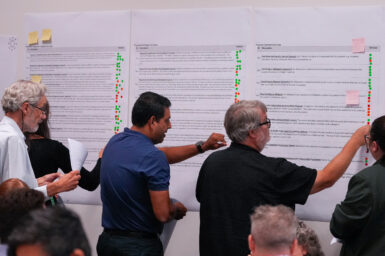Technical Design Groups
There are two Technical Design Groups that operate under the HL7 AU FHIR Working Group and are part of Sparked – AU Core and AU eRequesting.

Looking for more on the Sparked Technical Design Groups?
AU Core Technical Design Group
Mission
The mission of the AU Core Technical Design Group (AUCTDG) (the Group) is to define the requirements and specifications to support interoperability among clinical and non-clinical systems in Australia setting the minimum expectations for a system to record, update, search, and retrieve core digital health and administrative information associated with a patient.
Charter
The role of this Group is to, within the scope of its mission:
- Identify, design and validate FHIR structures to support the information exchange needs of core digital health and administrative information associated with a patient.
- Work with HL7 or HL7 AU Working Groups or other organisations to identify or design appropriate controlled vocabularies for encoding data elements in an information exchange.
- Identify, define, and validate RESTful operations and services to support the information exchange needs of core digital health and administrative information associated with a patient.
- Monitor international FHIR standards and attempt harmonisation of information content and representation of such standards with the HL7 AU content.
- Monitor information interchange standards developed outside of HL7, and attempt harmonization of information content and representation of such standards with the HL7 AU content and representation within mission scope.
AU eRequesting Technical Design Group
Mission
Define the requirements and specifications to support interoperable requesting and ordering in Australia, setting the minimum expectations for recording, updating, searching, and retrieving requesting information associated with a clinical service request.
Charter
- Identify, design, and validate FHIR structures to support the information exchange and workflow needs of digital health and administrative interactions associated with clinical service requesting.
- Work with HL7 or HL7 AU Working Groups or other organisations to identify or design appropriate controlled vocabularies for encoding data elements in an information exchange.
- Identify, define, and validate RESTful operations and services to support the information exchange and workflow needs associated with clinical service requesting.
- Monitor international FHIR standards and attempt harmonisation of information and workflow content.
- Monitor information interchange and workflow standards developed outside of HL7, and attempt harmonisation of information content and representation of such standards with HL7 AU approaches and representation where appropriate.

